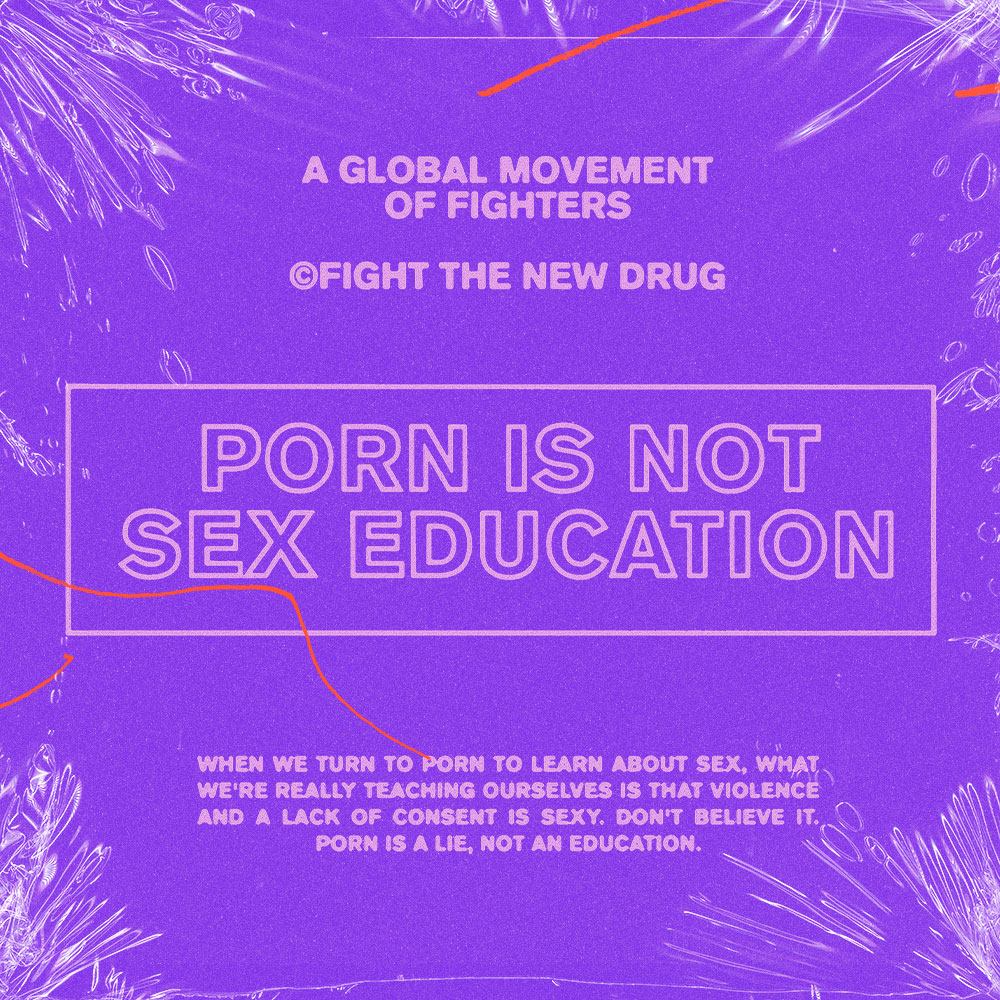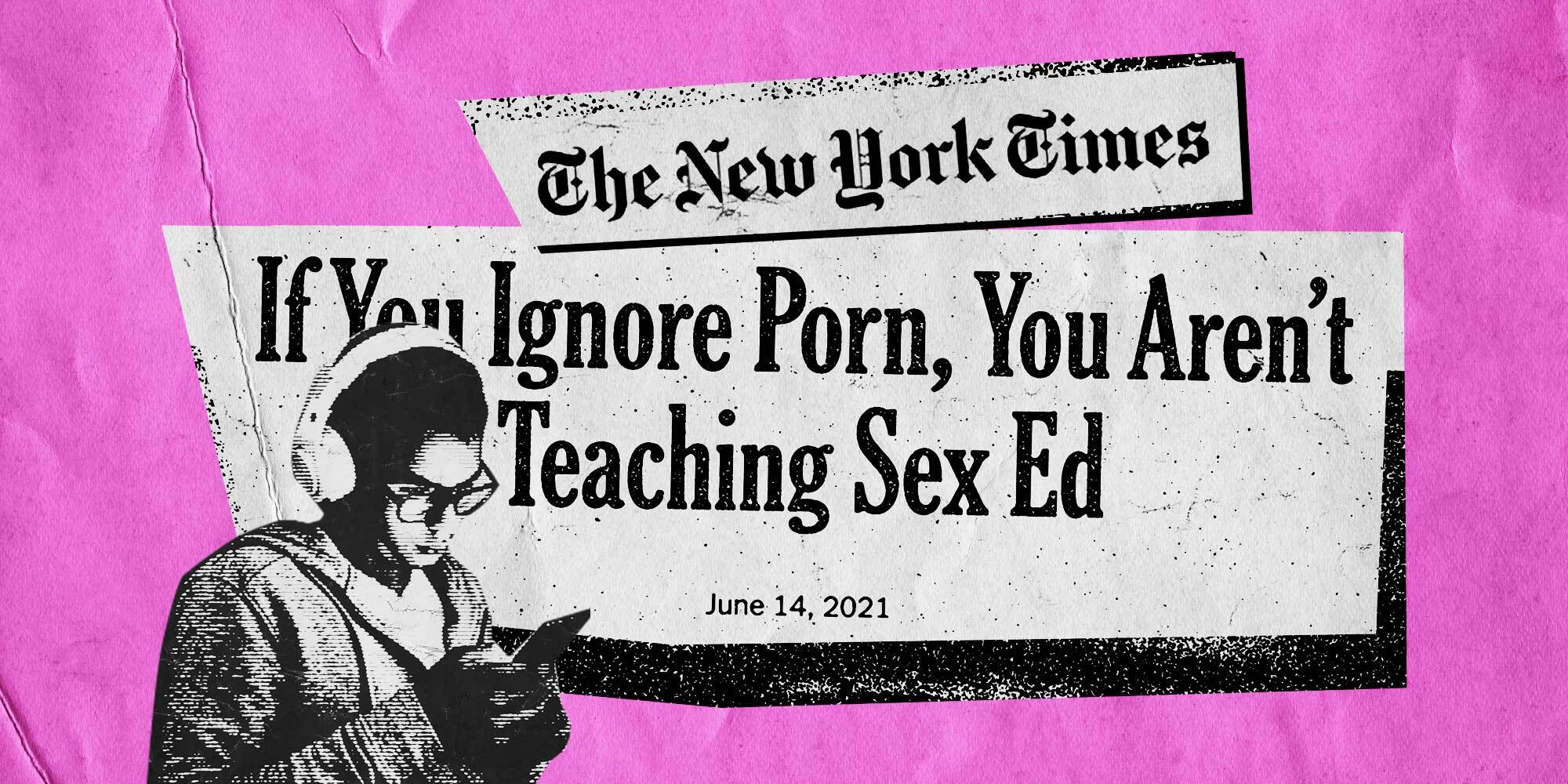It’s not every day you see an article about the harms of pornography as you browse or scroll through many mainstream news outlets.
In June, however, an opinion piece was published in the New York Times with a provocative title: “If You Ignore Porn, You Aren’t teaching Sex Ed”.
Written by Peggy Orenstein, author, and journalist who has written often about topics like gender issues, sex and teen relationships, and how porn is negatively impacting the rising generations, she outlines how porn is being used increasingly by adolescents as a main source for learning about sex—but with devastating consequences.
She goes on to describe some of the reasons why this trade-off is problematic, highlighting the highly unrealistic nature of porn compared to real sex, the influence it has on consumers’ perceptions and behavior, and the way it can negatively affect relationship satisfaction.
Related: Should Teens Be Taught How To “Responsibly Consume” Porn?
Orenstein doesn’t offer a clear-cut “solution,” but she does discuss the curriculum called “porn literacy,” a critical approach to porn researchers have found that, when done in a “nonjudgemental, science-based” fashion, led to teens being “less likely to believe that sexually explicit media was realistic, an easy way to make money, or a viable form of sex education.”
Our mission at Fight the New Drug is right on that same line: we want to empower individuals to make the best decision regarding porn consumption. How? Information is power, and we look to inform individuals through evidence or personal accounts.
Articles like this one published by Orenstein underscore why being informed about porn is increasingly critical in our society. The lack of conversation and ignorance about it is not helping people live healthier, happier, love-filled lives.
We work for individuals to have the resources to feel comfortable to start that conversation and be fully informed about the full risks and implications of porn consumption, especially among younger consumers.
What does Orenstein say?
In this opinion piece, Orenstein argues three main reasons why porn can be harmful and needs to start being discussed, uncomfortable as it may be. She affirms that being curious about sex is natural in kids, but porn? That’s a whole other conversation.
Related: Is It A Good Idea To Teach College Kids How To Consume Porn Responsibly?
The issues she states mirror topics we cover in our “Get the Facts” page, which is the “cheat sheet” for information on some of the biggest topics and questions individuals have about porn.
So what does she say?
1. Porn is unrealistic
Orenstein points out one of the biggest issues about porn: it’s not like real sex. While porn is often sold as a “fantasy,” the reality is it often markets itself as the opposite: many approach it like a how-to guide for improving their sex life.
The problem? Neither the actors nor the acts portrayed in porn are like those in most people’s sex lives. Porn is produced for entertainment, not education, though it’s often utilized for both.
Apart from performers with “wildly unrealistic bodies” several of them have spoken out about their experiences within the industry, and make clear that the glamorous view consumers see is not always what goes on behind the scenes.
Related: Oral Before Kissing: How Porn Culture Has Changed Teens’ First Sexual Encounters
As if that weren’t problematic enough, porn portrays an idea of sex that is increasingly violent, “indifferent to consent” and upholds and racist stereotypes and sexist attitudes.
Orenstein points out this very real concern: “The free content most readily available to minors tends to show sex as something men do to rather than with women.”
2. Porn can influence consumers’ perceptions and/or behaviors
While most of the boys Orenstein interviewed assure her they are able to distinguish between the fantasy of porn and the reality of sex, evidence shows that, much as other media influence, porn has the capacity to influence attitudes and behaviors.
Studies have shown that this occurs among adolescents, especially. They are more likely to believe images are realistic, and consider them acceptable or engage in more aggressive sex acts. On college campuses, this has appeared as a greater belief in rape myths and a greater objectification of women.
3. Porn can negatively impact relationship satisfaction
In her article, Orenstein cited a national survey conducted in 2021 that found that among 18 to 24-year-olds, porn was considered the source with the “most helpful information about how to have sex”—before even talking to one’s partner.
Yet, studies show that this trend isn’t serving consumers: consuming porn can have a negative effect on relationships—not just romantic ones, either. It hurts real intimacy and love, harms mental health, and fuels loneliness.
Related: Parents: If You Don’t Teach Your Kids About Sex, Porn Sites Will
TL;dr — Porn is teaching toxic lessons
Orenstein points out the main issues that arise when considering porn, and all the reasons why it definitely is not a legitimate source for information about sex, especially given the prevalence of minors’ exposure to porn, increasingly before any romantic encounter they might have.
To deal with these issues, caretakers and those who interact with teens can’t bury their heads in the sand. Becoming informed is the first step in becoming better decision-makers and having quality conversations about sex and porn.
Orenstein cites a program developed by researchers at Boston University that precisely aims to achieve this: a porn literacy curriculum that aims to help students question what is portrayed about sex and relationships at face value in porn.
Porn literacy curriculum may be well-intended, but many of these curriculums ultimately neglect decades of studies by respected academic institutions that have demonstrated porn’s significant negative impacts on consumers, relationships, and society. As long as a critical look at porn includes discussion about its harms, individuals are getting a more complete picture of the risks they accept should they choose to watch it.
Related: “Why Was The Rape Victim So Upset?”—Why Teens Need Better Consent Education
Fight the New Drug aims to empower individuals to make choices that help them build healthier relationships. For people everywhere, it’s clear that becoming informed about porn’s harms and being critical of what porn has to offer, especially when it comes to fulfilling relationships, is a step to a healthier life.
Having age-appropriate conversations about this issue with kids and teens of all ages will only help them make healthier, better-informed choices for years to come.
And as Peggy Orenstein says, “Refusing to discuss sexually explicit media, which is more accessible to minors than at any other time in history, won’t make it go away.”
To check out our free conversation guide, Let’s Talk About Porn, click here.




